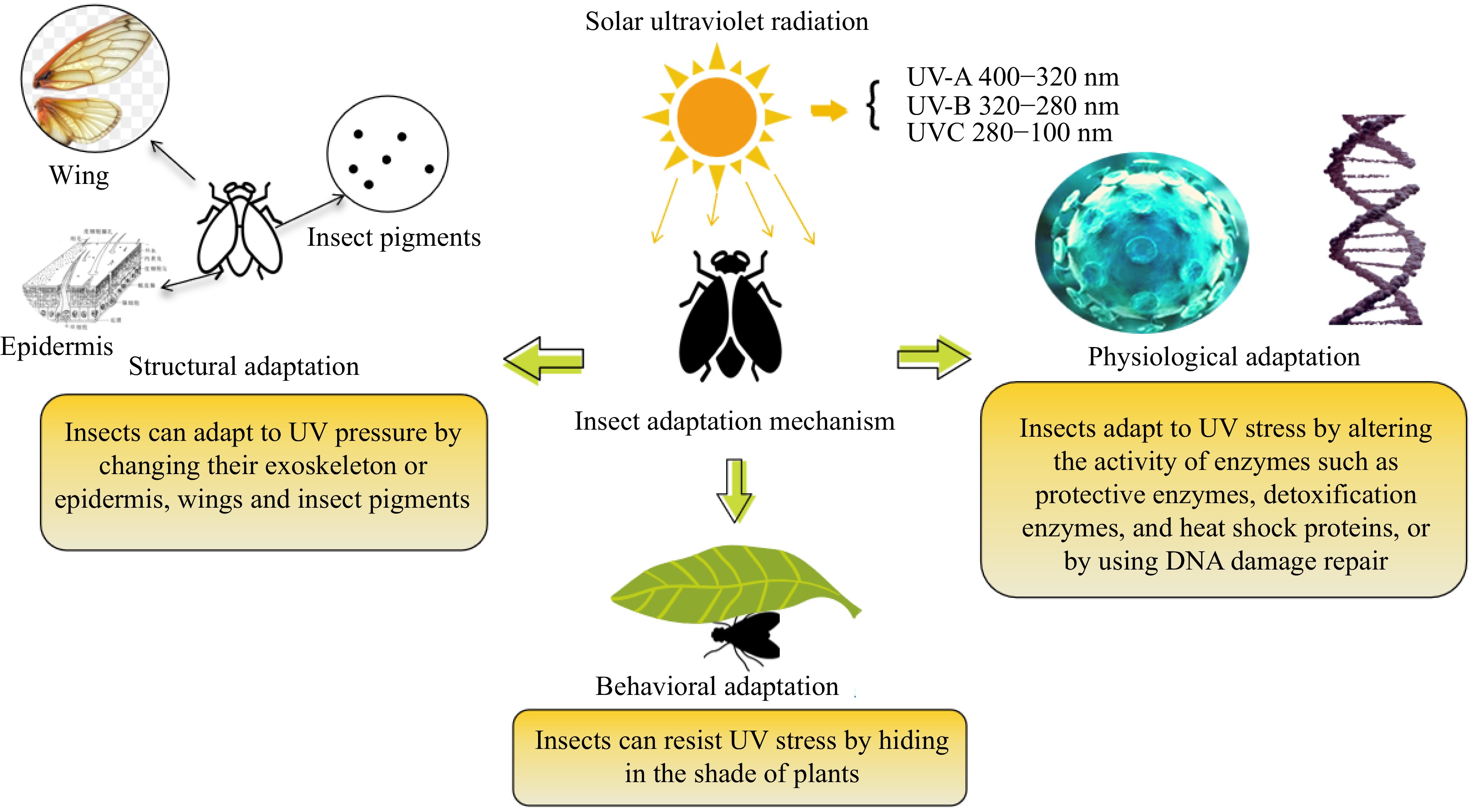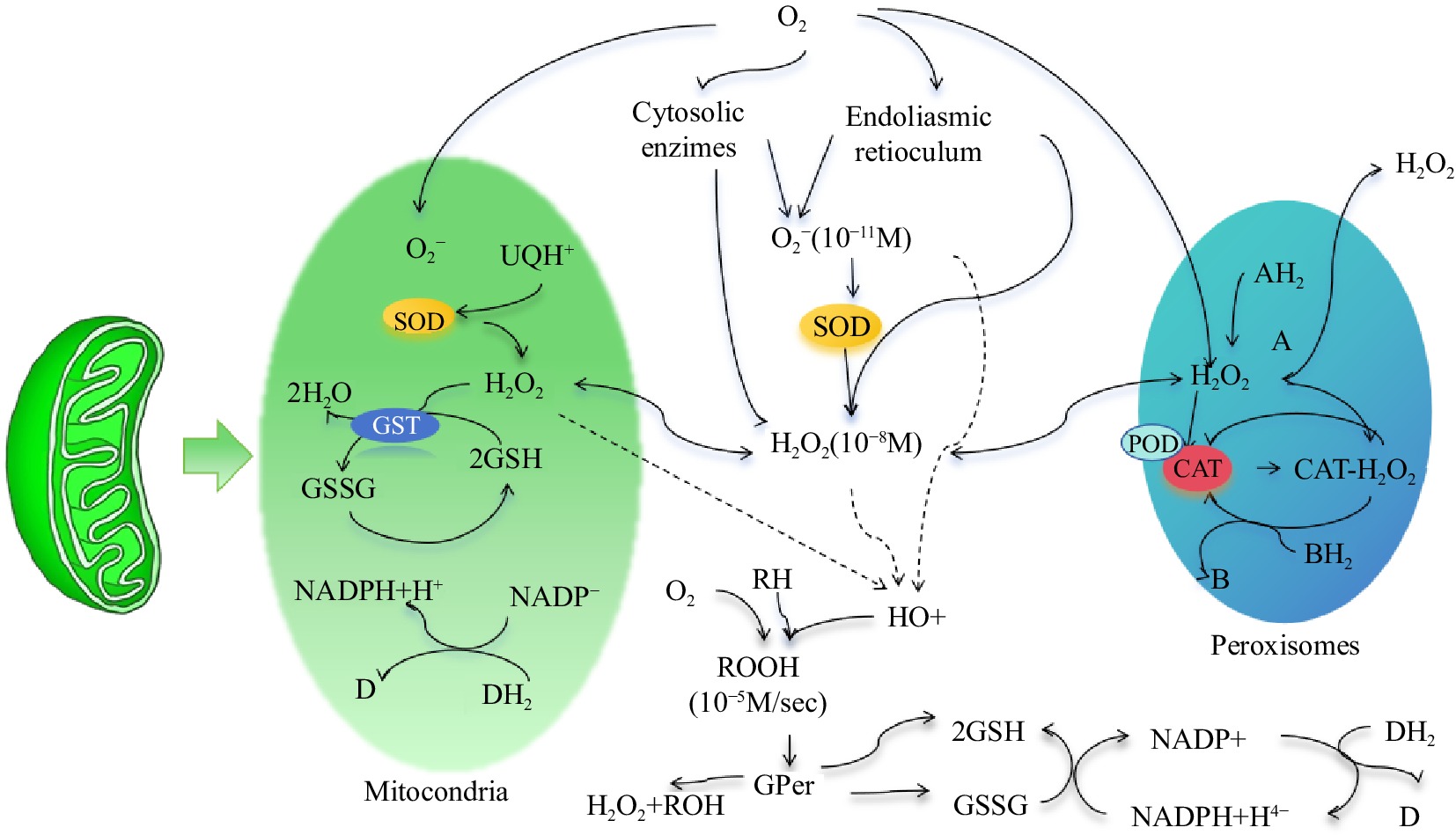-

Figure 1.
Adaptation of insects to ultraviolet radiation. Note: Figure modified from The biological effects of ultraviolet light on insects according to Wang et al.[69].
-

Figure 2.
Distribution and interaction of SOD, POD, and CAT protective enzymes in cells. Note: Figure Modified metabolic pathways of hydrogen peroxide metabolism in cells according to Valdez et al.[77].
-
Biological effect Insect Biological effects of UV on insects Behavioral characteristics Phototactic behaviour Diaphorina citri It is taxis to a variety of wavelengths of monochromatic light including 360 nm UV[34]. Drosophila melanogaster Low intensity UV produces a momentary attraction to D. melanogaster, while high intensity UV causes avoidance[35]. Trophic behaviour Bombus friseanus Red flowers can stimulate the photoreceptors of B. friseanus by reflecting UV, which makes it inclined to choose red flowers for food[36]. Dispersal behavior Bemisia tabaci The flight localization ability of whitefly would be destroyed under insufficient UV irradiation, and then, the propagation and diffusion behavior of whitefly would be changed[15]. Courtship behavior Bicyclus anynana The male is able to select a mate based on the eye-shaped markings on the female's wings that reflect UV[37]. Pieris rapae In the UV-light abundant environment, 96.20 % female butterflies showed active courtship behavior, and the mating success rate was 37.33 %, which was significantly higher than that in the UV-light deficient environment[38]. Parasitic behavior Corcyra cephalonica It was found that the parasitism rate of egg Trichogrammatid irradiated by UV light was the highest[39]. Avoid natural enemies Lopinga achine When the light intensity is low and most of it is UV, it can avoid deadly attacks from aerial enemies[40]. Biological characteristics Growth and development Macrosiphum avenae Inhibited the molting of nymphs, prolonged the development period, and caused population degradation[41]. Myzus persicae Damaged dermal cells and significantly affected the relative expression of CHS1[26]. Prolonged development time and average generation cycle, which stimulated fertility[16]. Acyrthosiphon pisum With the extension of radiation time, the number of generations increased, and the body weight and body length first increased and then decreased[42]. Reproduction Dialeurodes citri When a pair of D. citri was irradiated with UVA for 0, 1, 4 and 7 h/d, it was found that the fecundity and spawning capacity of the other treatments were significantly increased compared with the control group except for 7 h/d[43]. Physiological characteristics Enzyme system Myzus persicae The expression of four protein-coding genes (coenzyme NADH, heat shock protein 70, epidermal protein, and REDOX enzyme) was activated, and the transcription level was enhanced[44]. Immune system Bombyx mori Feeding B. moriwith UV-B irradiated mulberry leaves enhanced its resistance to nuclear polyhedrosis virus[45]. Table 1.
Effects of UV stress on biological characteristics of insects.
Figures
(2)
Tables
(1)